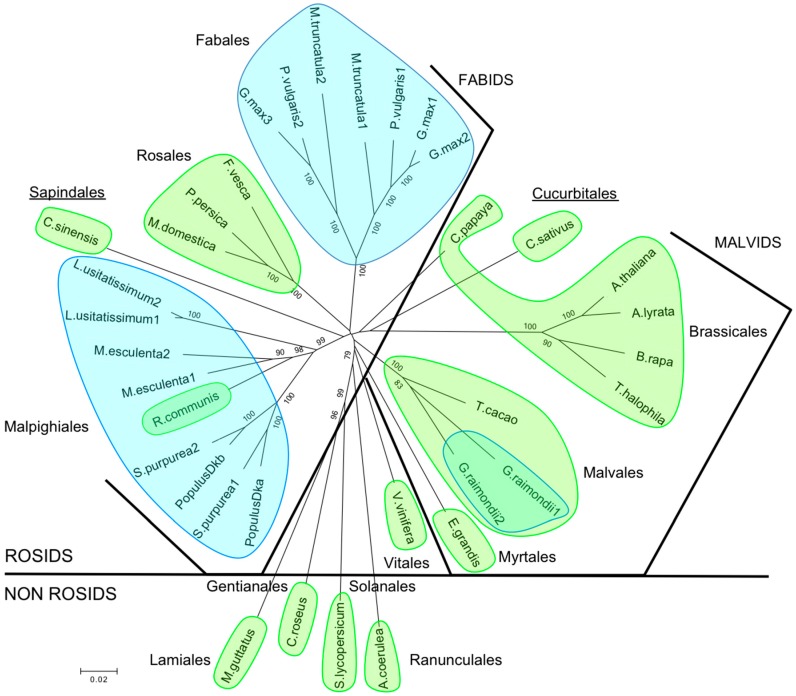Figure 1.
Unrooted relationship tree of Histidine-aspartate Kinases 1 (HK1s) from Populus and other plants. Amino acid sequences of HK1a (Populus Dka, accession No. AJ937747) and HK1b (Populus Dkb, accession No. LT622839) were aligned with HK1 homologous proteins of Arabidopsis (A. thaliana, AT2G17820 and A. lyrata, 480680), saltwater cress (T. halophila, XM_006409179), turnip (B. rapa, Brara.G00235), cucumber (C. sativus, Cucsa.322710), papaya (C. papaya, evm.TU.supercontig_6.277), cocoa (T. cacao, Thecc1EG000177), cotton (G. raimondii, Gorai.007G049200 and Gorai.003G008400), peach (P. persica, Prupe.7G170700), apple (M. domestica, MDP0000276711), strawberry (F. vesca, gene14583-v1.0-hybrid), sweet orange (C. sinensis, orange1.1g001044m.g), rose gum (E. grandis, Eucgr.I02335), grape vine (V. vinifera, GSVIVG01018749001), Colorado blue columbine (A. caerulea, Aqcoe6G223000), tomato (S. lycopersicum, Solyc02g083680), Madagascar periwinkle (C. roseus, AF534893), yellow monkeyflower (M. guttatus, Migut.L00691), purple willow (S. purpurea, SapurV1A.0698s0020 and SapurV1A.0130s0330), castorbean (R. communis, 29656.t000014), cassava (M. esculenta, Manes.02G106100 and Manes.01G147600), flax (L. usitatissimum, Lus10041891.g and Lus10028438.g), barrelclover (M. truncatula, Medtr5g022470 and Medtr8g075340), common bean (P. vulgaris, Phvul.002G107100 and Phvul.003G264600) and soybean (G. max, Glyma01g36950, Glyma11g08310 and Glyma02g05220) by CLUSTALW and were represented as a phylogram constructed with the neighbour-joining method and 1000 bootstrapping replicates. The bootstrap values higher than 75% are indicated on the tree. The scale bar represents 0.02 amino acid substitution per site. Each classification order is circled and classification clades are separated by thick black lines. The two underlined orders belong to the opposite clade. Plant species with one HK1-like gene are highlighted in green and plant species with at least two HK1-like genes are highlighted in blue.

